Q3:
AS & A Level Chemistry - 9701 Paper 4 2020 Summer Zone 2
Questions:
3/8

Topic: CH2 - ATOMIC STRUCTURE
Solution



PRACTISE
Similar Questions

LEARN
Concepts with Sparky

More Questions from this Topic
Theory
CH2 - ATOMIC STRUCTURE
Vanadium, niobium and tantalum are metals in the same group of the Periodic Table.(a) The shorthand electronic configuration of vanadium in the ground...
2024
 Winter
Winter
 Winter
Winter
 2
2
Theory
CH2 - ATOMIC STRUCTURE
(a) (i) Explain the lack of reactivity of nitrogen gas, $N_2(g)$.........................................................................................
2024
 Summer
Summer
 Summer
Summer
 4
4
Theory
CH2 - ATOMIC STRUCTURE
Cobalt, rhodium and iridium are metals in the same group of the Periodic Table. (a) The shorthand electronic configuration of cobalt is [Ar]3d\(^7\)4s...
2024
 Winter
Winter
 Winter
Winter
 2
2
Theory
CH2 - ATOMIC STRUCTURE
(a) Table 3.1 shows some properties of two Group 14 elements, C and Sn, in their standard states. The table is incomplete.\begin{table}
\centering
\b...
2024
 Winter
Winter
 Winter
Winter
 4
4
Theory
CH2 - ATOMIC STRUCTURE
Cobalt, rhodium and iridium are metals in the same group of the Periodic Table.(a) The shorthand electronic configuration of cobalt is [Ar]3d^7 4s^2.(...
2024
 Winter
Winter
 Winter
Winter
 3
3
Theory
CH2 - ATOMIC STRUCTURE
(a) Describe the trend in the solubility of the sulfates of magnesium, calcium and strontium. Explain your answer........................................
2024
 Summer
Summer
 Summer
Summer
 3
3
Theory
CH2 - ATOMIC STRUCTURE
The elements silicon, phosphorus and sulfur are in Period 3 of the Periodic Table.(a) (i) Describe the variation in atomic radius from silicon to sulf...
2023
 Winter
Winter
 Winter
Winter
 3
3
Theory
CH2 - ATOMIC STRUCTURE
(a) (i) Complete Table 1.1 to show the number of electrons in the 3p subshell and the total number of unpaired electrons in an atom of P, S and Cl. [2...
2023
 Winter
Winter
 Winter
Winter
 3
3
Theory
CH2 - ATOMIC STRUCTURE
The Pauling electronegativity values of elements can be used to predict the chemical properties of compounds.Use the information in Table 1.1 to answe...
2023
 Spring
Spring
 Spring
Spring
 2
2
Theory
CH2 - ATOMIC STRUCTURE
Tellurium is an element in Group 16. The most common isotope of tellurium is $^{130}\text{Te}$. Its electronic configuration is $[\text{Kr}]\;4d^{10}\...
2023
 Summer
Summer
 Summer
Summer
 2
2
More Questions from year 2020
Theory
CH10 - GROUP 2
Group 2 metals form alkaline solutions in water.(a) (i) Write the equation for the reaction of calcium oxide with water..................................
2020
 Spring
Spring
 Spring
Spring
 2
2
Theory
CH11 - GROUP 17
(a) Describe the trend in the colour of the Group 17 elements down the group. ..........................................................................
2020
 Spring
Spring
 Spring
Spring
 1
1
Theory
CH17 - HYDROXY COMPOUNDS
(a) A series of reactions starting from glycerol is shown. (i) Suggest the reagent(s) and conditions for reaction 1. ....................................
2020
 Spring
Spring
 Spring
Spring
 2
2
Theory
CH12 - AN INTRODUCTION TO THE CHEMISTRY OF TRANSITION ELEMENTS
Iron is a transition element in the fourth period. Iron forms compounds containing the ions $\text{Fe}^{2+}$ and $\text{Fe}^{3+}$.(a) (i) Define the t...
2020
 Spring
Spring
 Spring
Spring
 3
3
Theory
CH10 - GROUP 2
(a) Group 2 metals form stable carbonates and sulfates.(i) State and explain the trend in the thermal stability of the Group 2 carbonates down the gro...
2020
 Spring
Spring
 Spring
Spring
 1
1
Theory
CH6 - ELECTROCHEMISTRY
Gold is an unreactive metal that can only be oxidised under specific conditions.(a) The standard electrode potential, $E^{\circ}$, of $\text{Au}^{3+}(...
2020
 Spring
Spring
 Spring
Spring
 1
1
Theory
CH14 - AN INTRODUCTION TO ORGANIC CHEMISTRY
Compound F has been found in small quantities in some cereals and dried fruit.(a) (i) Give the name of the functional groups labelled A and B.A .........
2020
 Spring
Spring
 Spring
Spring
 2
2
Theory
CH7 - EQUILIBRIA
Gallic acid, $C_7H_6O_5$, is a naturally occurring aromatic molecule. [Image_1: Structure of gallic acid] (a) Gallic acid contains the carboxylic ...
2020
 Spring
Spring
 Spring
Spring
 2
2
Theory
CH19 - CARBOXYLIC ACIDS AND DERIVATIVES
Valinol can be synthesised by the following reactions. Reaction 1 uses valine as the starting material. (a) (i) Write an equation for reaction 1, u...
2020
 Spring
Spring
 Spring
Spring
 2
2
MCQ
CH7 - EQUILIBRIA
Ethene can be oxidised to form epoxyethane, $C_2H_4O$.$$C_2H_4(g) + \frac{1}{2}O_2(g) \rightleftharpoons C_2H_4O(g) \quad \Delta H^\circ = -107 \text{...
2020
 Summer
Summer
 Summer
Summer
 2
2




 Share
Share




 Previous
Previous



